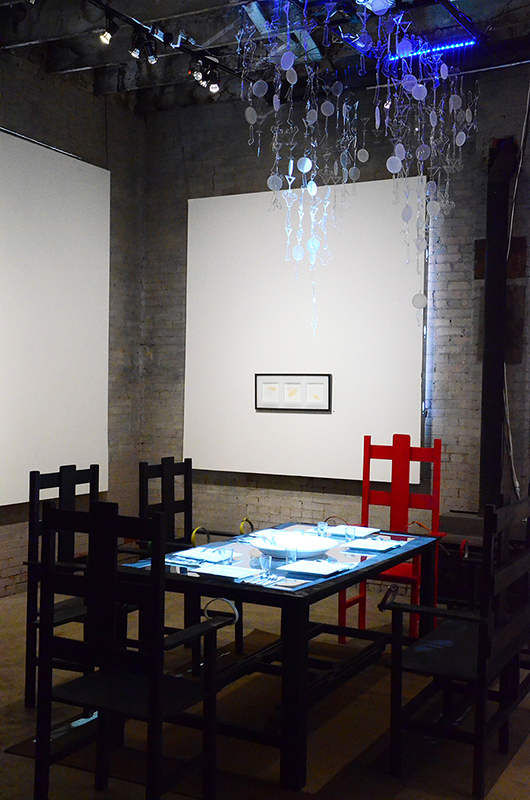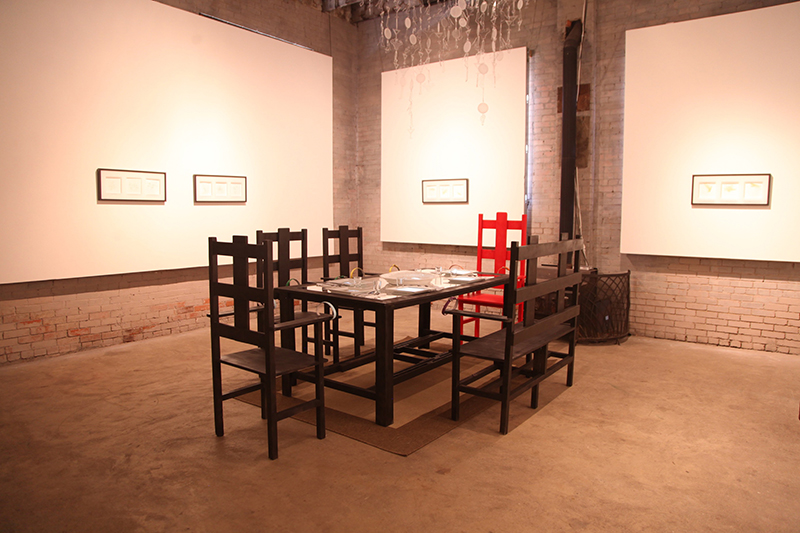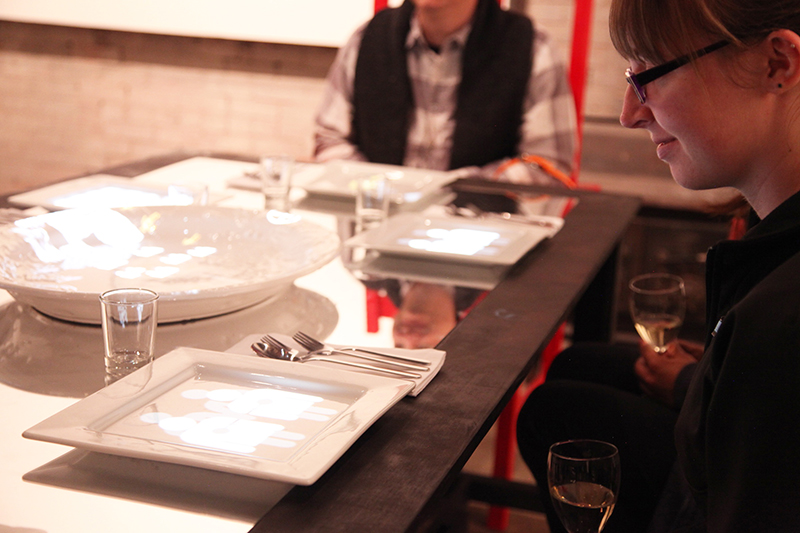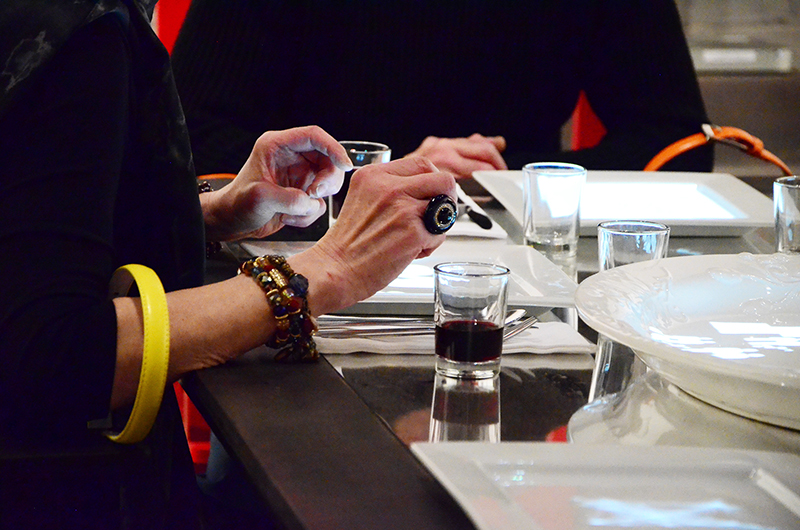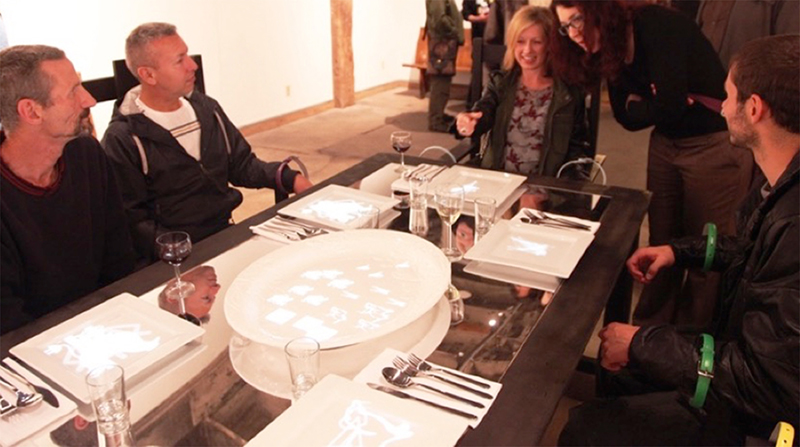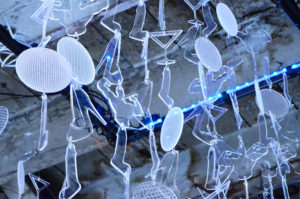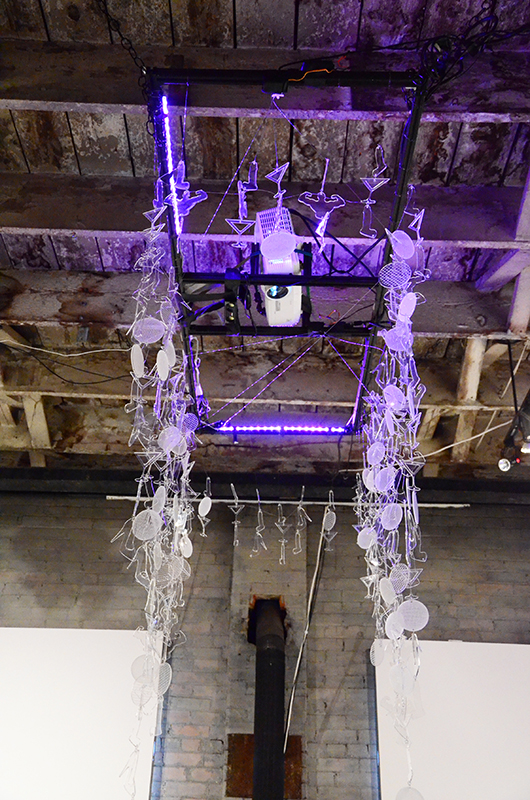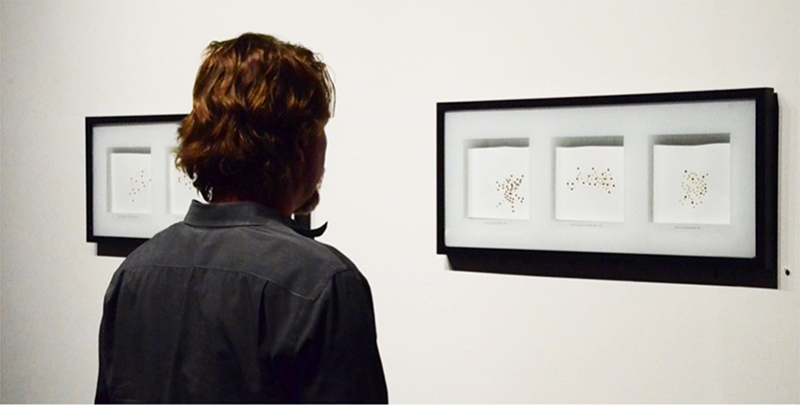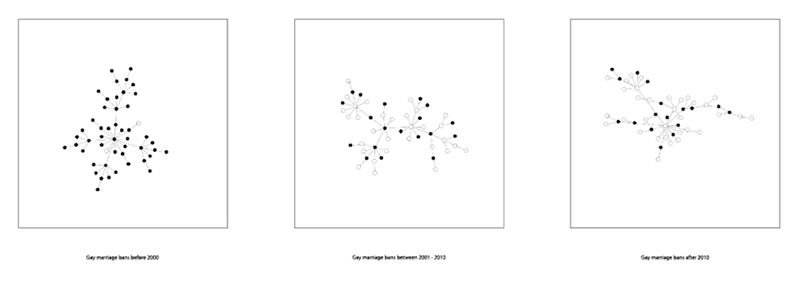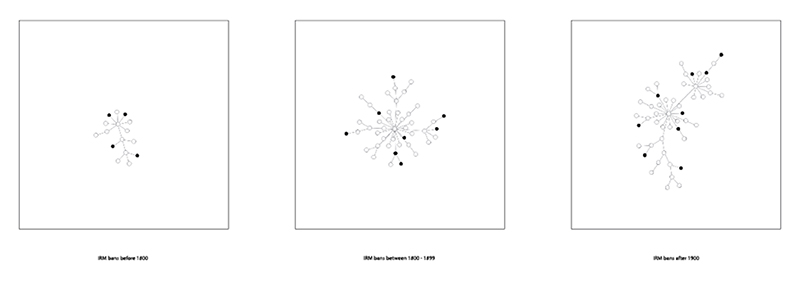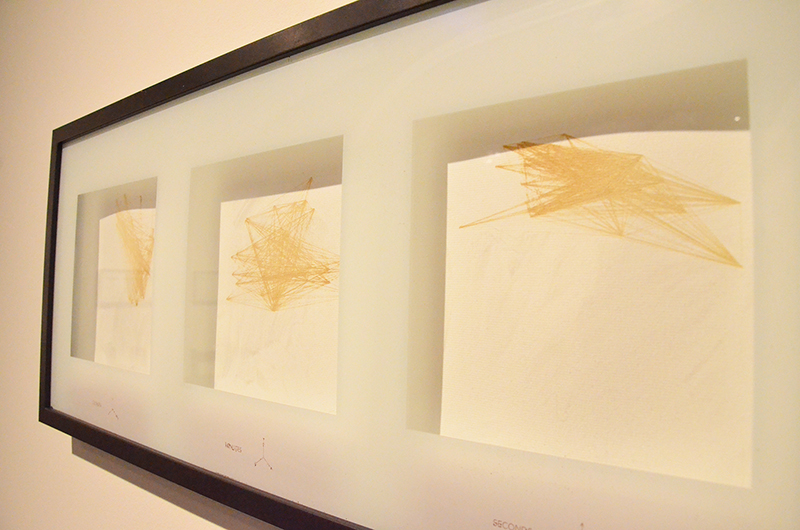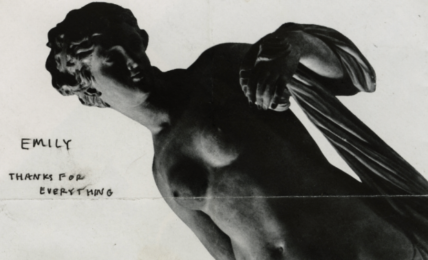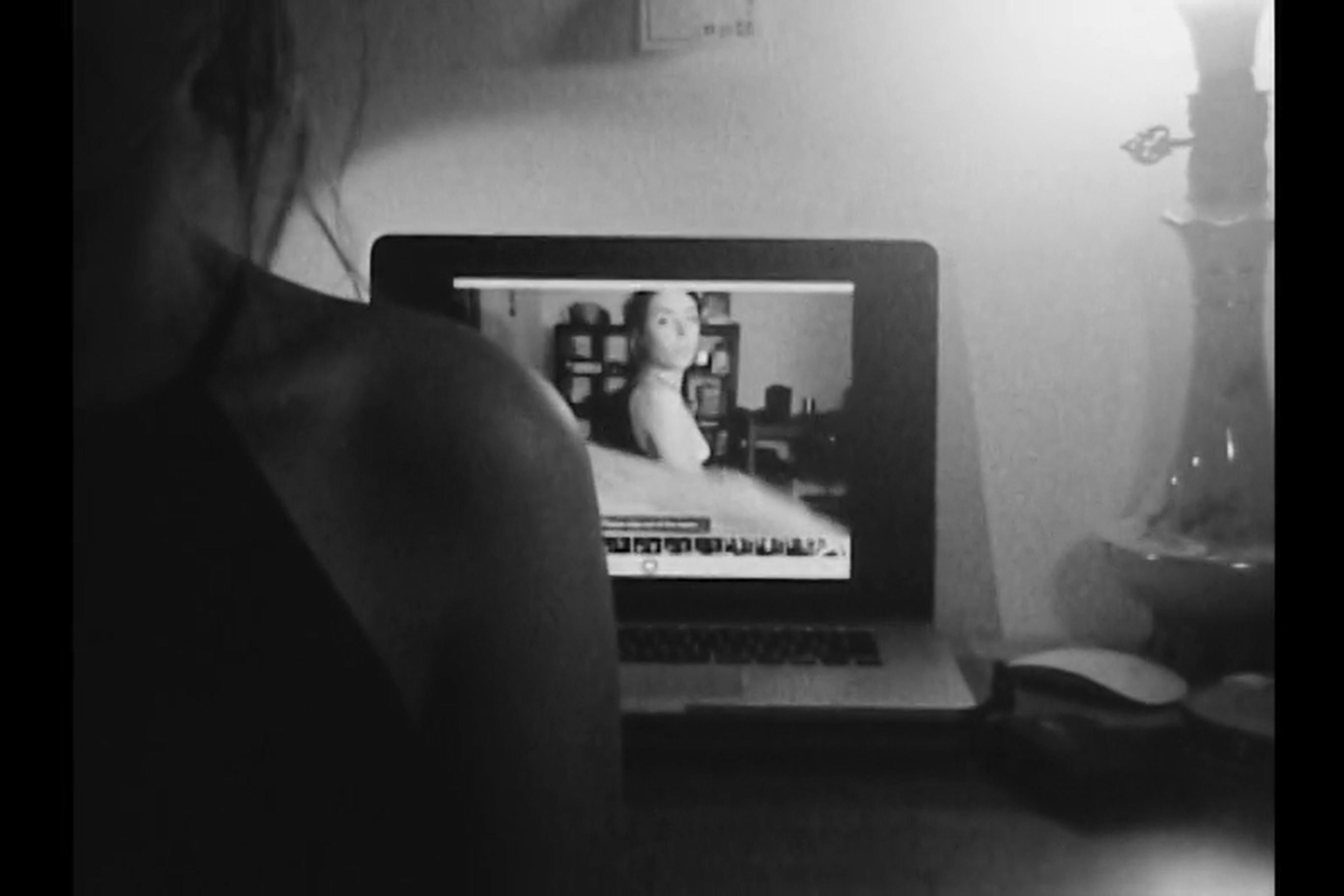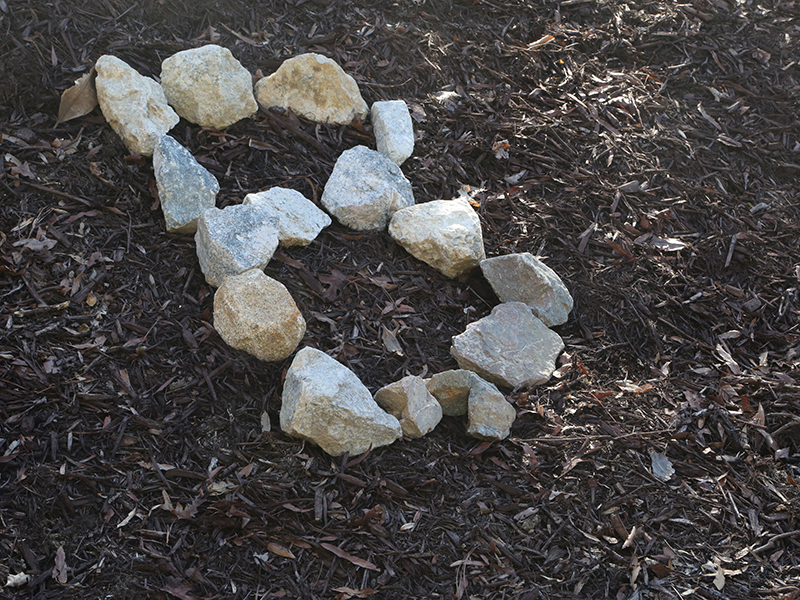Within the United States, responses toward LGBTQ communities by the culture at large (the mainstream culture) have transformed within the last 100 years. Toward the beginning of the 20th century, homosexuality was deemed immoral and punishable by law, necessitating that most homosexuals remained closeted and forcing gay communities to evolve separately from, yet parallel to, the culture at large. By the 1960s, gay political organizations began publicly protesting the mistreatment of gay communities and arguing for equal treatment and the decriminalization of homosexuality. Burdened by the mid-20th century art world’s homophobic tendencies, gay artists of this time period embraced these political ideals, which sparked development of bodies of work challenging traditional notions of sexuality, gender, love and eroticism. These early forays into expressing gay culture within the dominant art scene(s) became foundational for digital and new media artists gaining critical voices, enabling them to lash out at personal and cultural affronts. As history is fraught with critical reactions toward homosexuality, this essay explores how the culture at large has specifically suppressed gay-male behaviors, simultaneously fueling the formation of support networks and popular gay characteristics (e.g. lingo and speak, art, camp and drag).
Digital and new media practices have changed our modern artistic landscape. Nature & Spirit: A Digital Lens of Gay-Male Culture explores how the culture at large has suppressed gay-male behavior. Cultural, social and census data is used to drive digital media explorations, visualizing biomimetic practices through emergent digital art methods. Calling upon the use of digital media technologies and open-source, visual programming environments (e.g., Processing, Netlogo, Arduino microcontrollers, Max MSP, Microsoft Kinect, etc.), Nature & Spirit examines the logical, phantasmal (Harrell 2013) and imaginative media (Parikka 2012) approaches available to sub-dominant communities. Pulling inspiration from 20th century digital media, art and literature, this essay explores how gay-male communities continue to become more accepted contributors to the culture at large.
Revisiting 20th-century expressions of gay-male culture through 21st-century new-media practices, this discussion aims to decode and interpret the interplay of sexual identity and biological politics in dialogue with biomimetic creative practices. This conversation begins with the identification of critical vectors, or lenses – cultural & social dynamics, sexual stigma, scientific influences, predator vs. prey, homophobia, familial obligations and historical persecution – by which the culture at large has specifically overshadowed gay-male communities. With time, gay men have remastered such criticisms through the development of behavioral tools of empowerment, thereby allowing for their better incorporation into the culture at large. Nature & Spirit supports a personal and qualitative response to gay-male culture’s efforts to shed critical dominant pressures. Critical to this discussion of dominance is a series of biological and cosmologically focused explorations.
Emergence
Central to much of this investigation is E.O. Wilson’s thesis of eusocial species (highly organized animal societies) behaviors and how superorganismic systems are used to inform biological and social networks, like swarms and insect colonies. Integral to discussions of community and natural systems is complexity theory and occurrences of emergence. Complexity theory addresses scientific phenomena and theories through social biological systems, and considers relationships between all factions in a given system, or the ways in which multiple systems interweave, lending to the foundation and discussion of biological politics. Emergence provides fundamental structure and patterned ordering necessary throughout complex communities. Natural swarm systems, on the other hand, operate with an inherent sense of emergence and self-organization, as they are methodical in their synchronicity, need no top-down direction, and perfectly inspire the groundwork for digital-media development. Nature & Spirit references how emergent digital-media tools enable modern society’s adaption to technology and mirror biological systems.
Roberto Esposito discusses correlations between social and political dynamics of networked communities. Esposito argues that “By overlaying the legal and medical semantic fields, one may well conclude that if community breaks down the barriers of individual identity, immunity is the way to rebuild them, in defensive and offensive forms, against any external element that threatens it.” However, he adds that too much immunity may cause “the sacrifice of the living” (Esposito 2013, 85). Ultimately, the purpose of community is to support individualism while protecting the whole from outside harm. This same level of complexity and swarm logic is present in the development of digital media and countercultural activist efforts (Parikka 2010). As humans have taken over greater parcels of natural ecosystems, there has been a rise of human activity mirroring that of insect colonies. Biomimicry (and biomimetics) is the study and mimicry of nature’s models and designs to solve human problems. “Consequently, if we see the key political and organizational agenda of contemporary technological culture as one reliant on the insect question, this begs us to look quite closely at how insects have been gradually integrated as part of the creation of media culture, key concepts of body politics, and the diagrammatic capture of ‘animality’ as an affect, an intensity” (Parikka 2010, 29). Following the example of swarming insects, counterculture activists often act locally and influence broadly. With the rise of social- and digital-media resources, a power shift has occurred, making way for a divergence from the culture at large. Mirroring that of natural biological designs, the interplay of physical and digital media systems has afforded gay activists the ability to achieve a greater standing across conversations of (sexual) identity and biological politics. Activists celebrate a multidimensional opportunity to meet, collaborate and organize movements. In “Video, activism and the art of small media,” Michael Chanan asserts that digital and social-digital media provide activists with an opportunity to swarm out from the margins and interstices to strike against hegemonic powers (Chanan 2011). He suggests that every activist movement having arisen in recent years has harnessed the Internet and supportive digital media to organize and propagate messages. Video itself is not a new resource for activists, but combining video and digital media resources has provided activists with the upper hand of immediacy and breadth.
Common throughout the 20th century, gay-male culture has adapted such countercultural behaviors as the Hanky Code, dressing in drag, and coopting dual-meaning lexicon. Originated by gay men in San Francisco after the Gold Rush, the Hanky Code was a color-coded system common among steam railroad engineers, miners, and cowboys in the Western U.S. Modern iterations of the Hanky Code started in New York City in the early 1970s to indicate one’s sexual preference. The use of the Hanky Code mimics natural mating displays of some firefly species, whereby female Photinus fireflies flaunt colored patterns to attract specific mates. Mirroring traditional gender roles, the Hanky Code also announced one’s acquaintance with dominant and submissive roles. Witnessed in biological systems, Selin Kesebir argues that as with the Hanky Code, language and symbols are essential to the success of any superorganismic (complex) systems. “In sum, symbolic communication is foundational to human sociality. Symbols play a crucial role in fulfilling each requirement for, a superorganismic formation: They foster coordination and cooperation by facilitating planning, information sharing, norm enforcement, and boundary marking” (Kesebir 2011).
Nature & Spirit: A Digital Lens of Gay-Male Culture
Nature & Spirit long shot, mixed-media series, 2015
Nature & Spirit interweaves the principles of biomimicry with discussions of sexual and biological politics and the empowerment of sub- and countercultural communities. Analogizing biological swarm networks, Nature & Spirit explores how the culture at large influences gay-male communities through discussions of sexual identity and equality, dominance and submission, social roles, and notions of modern families. Nature & Spirit investigates the visual dynamics of insect and collective-swarm patterns through the video projection, remixing and contextualizing swarm simulations and the application of gay and 1960s interracial societal data. In part, this series explores natural interactions between large- and small-scaled bodies of work, which encourage the recognition of gay artistic and activist efforts through the creation of dialogue and promotion of community participation. Through its technical and physical composition and visual content, Nature & Spirit also speaks directly to my feelings and recollections of my childhood, my reconciliation with my own homosexuality, and how I hope the future of the “modern family” may take shape.
Therapeutic Nightmare
Central to this discussion, Therapeutic Nightmare sets the stage for broader questions of how modern families embrace queerness. This piece reflects my upbringing and the personal exploration of my “coming out” process. As my concept of the modern family is visualized upon individual surfaces of the dining table, it culls notions of “traditional” families mixed with aspects of my gay-male identity, reimagining an idealistic representation of a modern family. This exploration serves to investigate electroshock therapies used to cure gayness. For generations reparative therapies have used many such dreadful techniques in the hopes of correcting deviant behavior(s). Drawing attention to the rigidity of their form and the evocative nature of their function, these electric chairs draw visitors inward to interact with this body of work. As participants sit at the table, their presence triggers how Therapeutic Nightmare’s projects visual content, which explores the interplay of sexual identity and gender roles through a mix of contemporary (1950-80s) and modern (1990s-present) popular-culture references through in-text, coded icons and lexical icons. The table matches the aesthetic of the electric chairs, completing the physical structure of Therapeutic Nightmare.
Therapeutic Nightmare close-up shots, mixed-media series, 2015
Motivated by Andy Warhol’s Death and Disaster series, this investigation surveys electroshock therapies used to “cure the gay away.” As a gay man I often felt I was different from others, and though I was part of a loving family, something separated me from most everyone else. As a whole, the community of chairs represents the lack of comfort I felt in my own skin and how I always felt on edge in my youth. The red chair stands out from the rest, and is placed at the head of the table to call attention to such discomfort.
DragNet
Suspended above, DragNet provides a dual focal point that balances the table’s visual content, serving the purpose of a formal chandelier, in a traditional dining room setting, while making a statement regarding the inclusion of homosexuality in family dinner conversation through its construction from pieces symbolic of more flamboyant gay culture. Dually, this allows DragNet to be a part of Therapeutic Nightmare while also providing another point for discussion.
DragNet, laser cut and etched sculpture, 2015
Borrowing inspiration from the movement and texture of bees (hives) and fireflies (bioluminescent mating processes), DragNet is a lit and suspended installation that recognizes how gay-male communities are often represented across popular culture. DragNet presents varying iconic representations of gay-male culture – often the first impression for “outsiders” – seen witnessed throughout drag (cross-dressing) communities. From afar, elements of DragNet blend together, forming a chandelier, which does not appear out of place or confrontational within a dining room setting. However, upon closer inspection, visitors can see that it consists of five different custom-designed icons, cut and etched out of clear acrylic, which reflect different aspects of gay culture. Exploring notions of biomimicry, DragNet investigates a symbolic approach to complex biological systems through an investigation of natural swarm patterns atop modern iconic representations of gay-male culture. Like natural swarms, gay-male communities have united – often adapting to their surroundings by mimicking those that objectify them – standing strong in the face of adversity. DragNet’s movements represent activist behaviors. Moving as one defensive unit – forming a networked community – DragNet empowers and gains energy from its overall networked system.
DataLith [Process 1 and 2]
DataLith [Process 1], data visualization prints on display, 2015
DataLith [Process 1] is a series of generative, data-driven visual explorations, including timeline- and demographic-trend correlations between U.S. state gay marriage bans and repeals and 1960s civil rights movement interracial marriage bans and repeals. DataLith [Process 2] explores the astrological birth chart data for the Stonewall Uprising (1969) and the passing of California’s Proposition 8 (2004). Laser-etching data content into woven paper offers a softer and more eloquent function, juxtaposed against DataLith’s harder form. Visualizing the data also utilized in Therapeutic Nightmare and DragNet, DataLith is coded in Processing and Netlogo and explores relationships developed within human and natural, complex biological systems. DataLith is personal, as it surveys modern historical bans and repeals that affect me as a Californian, an American and a married gay man. Data regarding gay marriage bans and repeals are presented alongside similar data for interracial marriages, drawing a correlation between the civil rights movement in the 1960s and the push for gay equality today.
DataLith [Process 1], data visualization prints on display, 2015
DataLith [Process 1]
Coded in Netlogo, historic U.S. marriage data was fed into a live, generative algorithm and recorded in real time. Stills of these recordings were inverted and laser-cut into woven paper, accompanied by descriptions that are laser-etched into each frosted-glass surface. Data regarding U.S. gay marriage bans and repeals are presented alongside similar data for U.S. interracial marriage bans and repeals, drawing a correlation between the 1960s civil rights movement and the current push for gay equality.
DataLith [Process 1]: Gay Marriage bans, data visualization screen shots, 2015
DataLith [Process 1]: Interracial Marriage bans, data visualization screen shots, 2015
DataLith [Process 2]
As significant as codes, interpreting astrological data is a way of combining temporal data necessary to calculate the exact degree of all signs as they rise and set. Coded in Processing, astrological birth chart data about the Stonewall Uprising and California’s Proposition 8 were fed into a live, generative sketch and recorded in real time. Stills of these recordings were inverted using Photoshop and laser-cut into woven paper using Illustrator; degree, minute, second and axes indicators have been laser-etched into each frosted-glass surface.
DataLith [Process 2]: The Stonewall Uprising, data visualization prints on display, 2015
DataLith [Process 2], screen capture of data modeled over x, y & z axes, 2015
The use of emergent digital-media tools has adjusted the lenses that artists, makers and scholars use to creatively explore the world. Thankfully, the use of such tools and practices has helped strengthen the ways in which activist groups position themselves, and the ways in which they gain support and greater acceptance throughout the culture at large. My hope is that the continual exploration of new and open-source digital-media tools will continue to support the successful evolution of countercultural communities toward becoming sub-cultural communities, and ultimately better accepted across society, eliminating the prevalence of the culture at large. Nature & Spirit takes a critical look at the use of emergent digital media techniques used across popular activist culture, promoting correlations between complex biological and human social systems. Given human desires for autonomy and immunity, human systems are incrementally more complex (than natural biological systems) and have therefore gained a greater need for technological intervention and mediation. Exploring biomimetic practices, Nature & Spirit creates a conceptual, interactive and culturally participatory survey of sexual identity and biological politics (through the Western world) and promotes gay-male activist use of digital-media resources. Nature & Spirit’s exploratory approach to the use of emergent digital media and making practices – through open-source visual language environments and digital-media tools – promotes community involvement. Nature & Spirit speaks to the natural spirit within all beings regardless of personal differences, and has been a greatly personal exploration.
:::
 Brandon Gellis, an assistant professor in the University of Wyoming’s Department of Art & Art History, is a new media artist creating work around contemporary issues of sexuality at the intersections of art, technology and science. Brandon’s research investigates the interplay of language, identity and biological politics in dialogue with biomimetic creative practices. Brandon’s most recent show, Nature & Spirit: A Digital Lens of Gay-Male Culture, explores how the mainstream culture has suppressed gay-male behavior, while simultaneously fueling the formation of support networks and popular gay characteristics (e.g. lingo & speak, art, camp and Drag).
Brandon Gellis, an assistant professor in the University of Wyoming’s Department of Art & Art History, is a new media artist creating work around contemporary issues of sexuality at the intersections of art, technology and science. Brandon’s research investigates the interplay of language, identity and biological politics in dialogue with biomimetic creative practices. Brandon’s most recent show, Nature & Spirit: A Digital Lens of Gay-Male Culture, explores how the mainstream culture has suppressed gay-male behavior, while simultaneously fueling the formation of support networks and popular gay characteristics (e.g. lingo & speak, art, camp and Drag).
Works Cited
Chanan, Michael. 2011. “Video, Activism and the Art of Small Media.” Transnational Cinemas 2, no. 2: 217-226.
DuBois, R. Luke. A More Perfect Union, http://www.bitforms.com/exhibitions/r-luke-dubois-amore-perfect-union, accessed April 22, 2015.
Esposito, Roberto. 2013. “Community, Immunity, Biopolitics.” Angelaki: Journal of the Theoretical Humanities. Volume 18, no 3: 83-90.
Gidal, Peter. 2008. Andy Warhol Blow Job, One Work (London). Cambridge, Mass: Afterall Books. Distribution by The MIT Press.
Harrell, D. Fox. 2013. Phantasmal Media: An Approach to Imagination, Computation, and Expression. Cambridge, Massachusetts: The MIT Press.
Kesebir, Selin. 2011. “The Superorganism Account of Human Sociality: How and When Human Groups Are Like Beehives.” Review Personality and Social Psychology: 233-261.
Levin, Golan. Self-Adherence, http://www.flong.com, accessed April 22, 2015. Parikka, Jussi. 2012. “Imaginary Media: Mapping Weird Objects,” in What Is Media Archeology?, 41-89. Great Britain: Polity.
Parikka, Jussi. 2010. Insect Media: An Archaeology of Animals and Technology, Posthumanities, v. 11: Minneapolis: University of Minnesota Press.
This essay is based on content first published in Reconstruction Vol. 16, No. 1 (2016): Archives on Fire: Artifacts & Works, Communities & Fields
Context Links
Andy Warhol’s Blow Job (1964)
A National Geographic article about biomimetics

